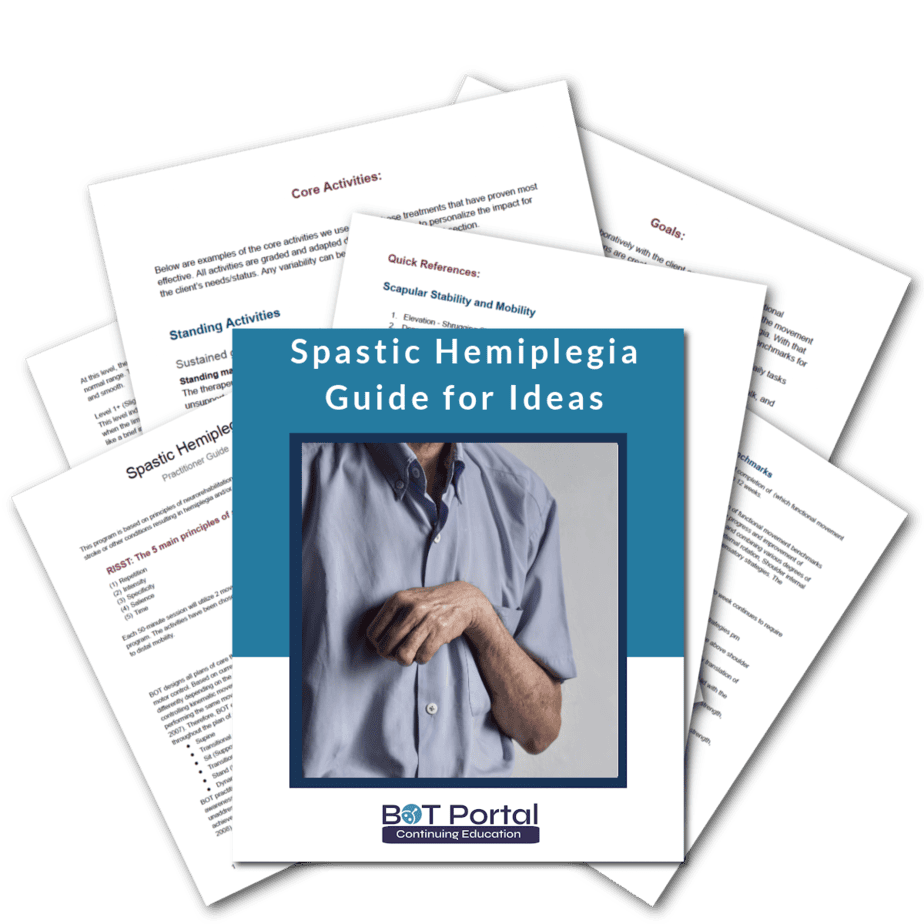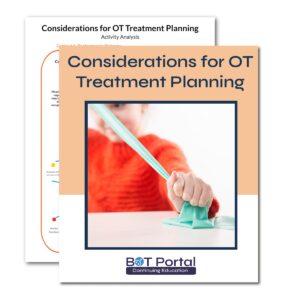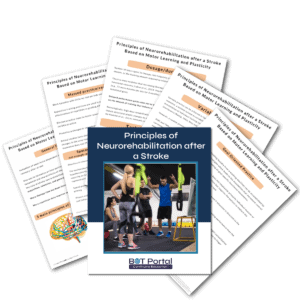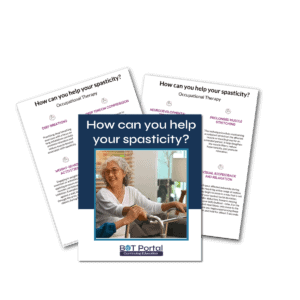Description
Spastic Hemiplegia Ideas for Practitioners
Research-supported ideas to guide your interventions on Spastic Hemiplegia
Spastic hemiplegia, characterized by increased muscle tone and stiffness on one side of the body, often results from a stroke or brain injury. Occupational therapy plays a crucial role in managing this condition by utilizing various researched methods to inhibit abnormal muscle tone and guide the brain in relearning motor patterns. Techniques such as deep breathing exercises help promote relaxation and reduce muscle tension, while deep tendon compression applies firm pressure to specific tendons to encourage muscle relaxation. Weight-bearing activities, such as pushing against a wall or bearing weight through the arms, also promote tone inhibition. Stretching exercises, including passive, active-assisted, and self-stretching, help increase flexibility and reduce muscle stiffness.
Occupational therapists use neurodevelopmental treatment (NDT) and proprioceptive neuromuscular facilitation (PNF) to facilitate normal movement patterns and enhance motor control. NDT involves handling techniques and positioning to inhibit abnormal muscle tone, while PNF employs specific movement patterns to improve neuromuscular coordination. Motor learning principles emphasize high repetition and task-specific practice, helping the brain form new neural pathways and promoting functional recovery. Visual biofeedback provides real-time feedback on movements, enabling patients to correct abnormal patterns and improve motor control. Slow and methodical movements, performed with a focus on quality over quantity, help manage spasticity by ensuring controlled and purposeful motor activity.
These techniques, tailored to each patient’s needs, effectively address spasticity and promote functional recovery. By combining these methods, occupational therapists can help patients with spastic hemiplegia improve their quality of life, regain independence, and perform daily tasks with greater ease. Through comprehensive and individualized treatment plans, patients can achieve significant progress in their rehabilitation journey.
What is included?
19 page guide for practitioners working with Spastic Hemiplegia
Also check these out:




